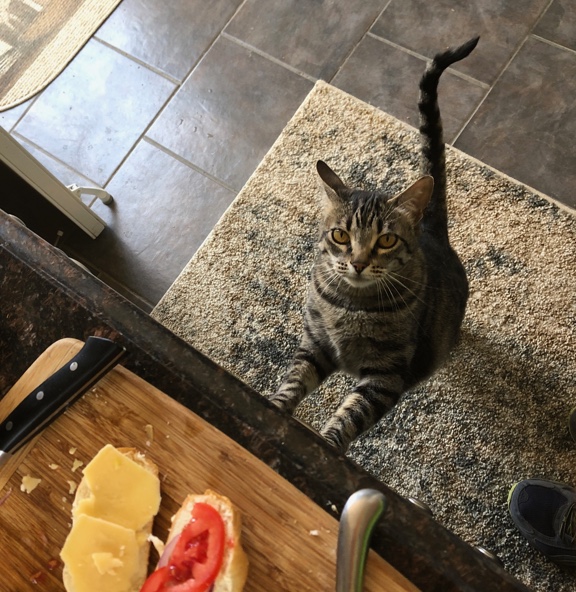
Episode 598
July 18,2020
When i was in elementary school, just learning how to read, our class would walk from Pacific Drive school to the Fullerton public library. We spent an hour at the library and were allowed to check out a book. i discovered Doctor Doolittle. i read every book. There were 12 books in the series. i could not stop turning pages.
Doctor Doolittle was a character created by Hugh Lofting who could talk to animals. The doctor learned to speak with animals from his parrot, Polynesia.
“Oh, we parrots can talk in two languages — people’s language and bird-language,” said Polynesia.
“But animals don’t always speak with their mouths,” she added. “They talk with their ears, with their feet, with their tails — with everything.”
She goes on to translate what the doctor’s dog Jip was saying by twitching his nose. Apparently Polynesia could understand many animal languages in addition to speaking human and bird.
Humans can understand animal language, if we listen and look.
It is my observation that animals are less inclined to listen to humans than they are to speak to them. Even when they are not vocal, they are demonstrative.
Koko the silver-backed gorilla used sign language to communicate with humans. Gorillas naturally use a form of body language to communicate with each other. Gorilla sign language is naturally understood by gorillas. Koko’s caretakers learned to understand it too.
My cat comes into the kitchen and stands on her hind legs near the counter when i am preparing my meal. It does not matter if i am cutting meat, cheese or vegetables… Springrr wants some. “Can I have some?” she says. When i offer her a piece of carrot she does not eat it, but stands up again when i continue cutting.
Springrr makes other physical statements, such as rubbing up against my leg and jumping up into a chair with me. She goes to a particular level of the cat tree when she wants to be brushed. More rarely, she makes noises. Little chirps can mean that there is a lizard on the patio. Quacking noises while being petted means that she is happy.
My other cat rolls over and says, “I trust you enough to show you my belly”.
Dolphins are perhaps more intelligent than humans. They have a complex language that humans do not understand. They do communicate with humans in physical ways. In Laguna, Brazil, dolphins have teamed up with humans by herding schools of fish into the nets of fishermen. The dolphins signal the fishermen with head and tail slaps when and where to throw their nets. The fishermen could not exist without the dolphins and this cooperation makes it easier for the dolphins to fish.
A rattle snake is not vocal except when it is coiled and rattling its tail.
“Stay away!” it says.
Ravens souring on the wind say, “Weeeeee weeeee yeaaaaa,” but it sounds like “Caw Caw” to humans. Just look at the joy and grace of ravens in flight and you will know what they are saying.
Some inanimate objects speak to me. A boulder i know says, “i feel like a whale breaching from the ground.”
A tree i saw the other day cast a shadow which said, “A deer came by here the other day.” Sure enough, there were also deer tracks under the tree.
On a road trip i looked for the letters of the alphabet in nature. i found them easily almost everywhere i looked.
We can all understand animal languages even if we don’t speak them.
We can discover how nature speaks to us, if we listen and see well enough.









